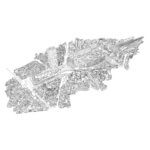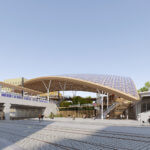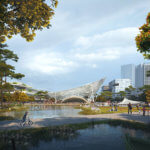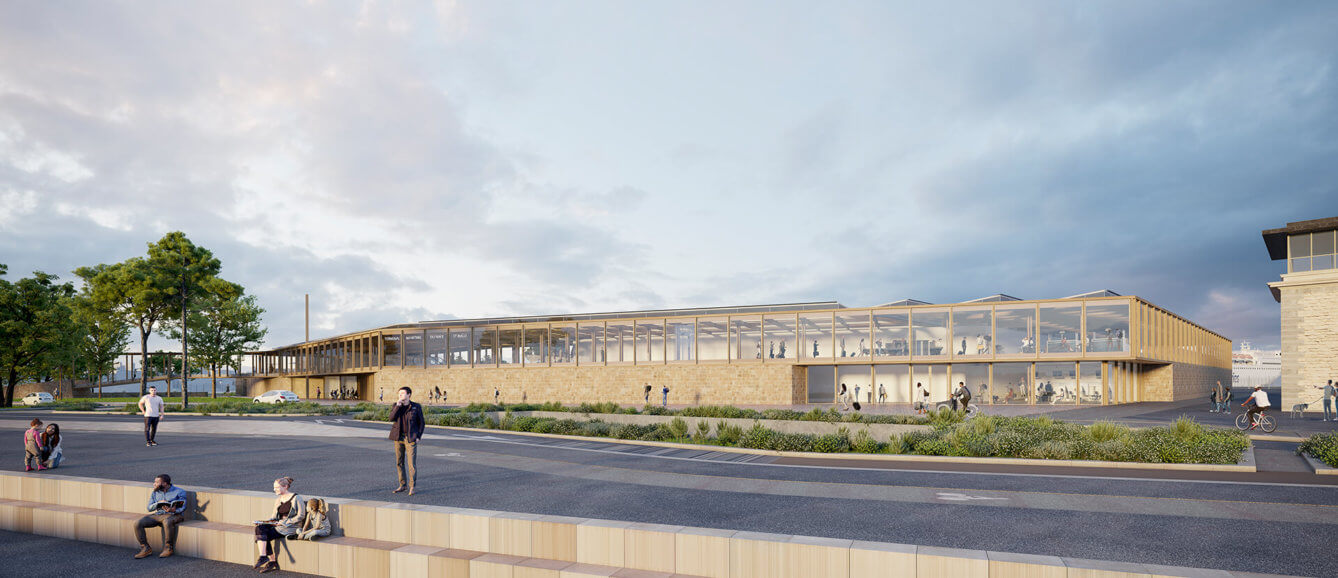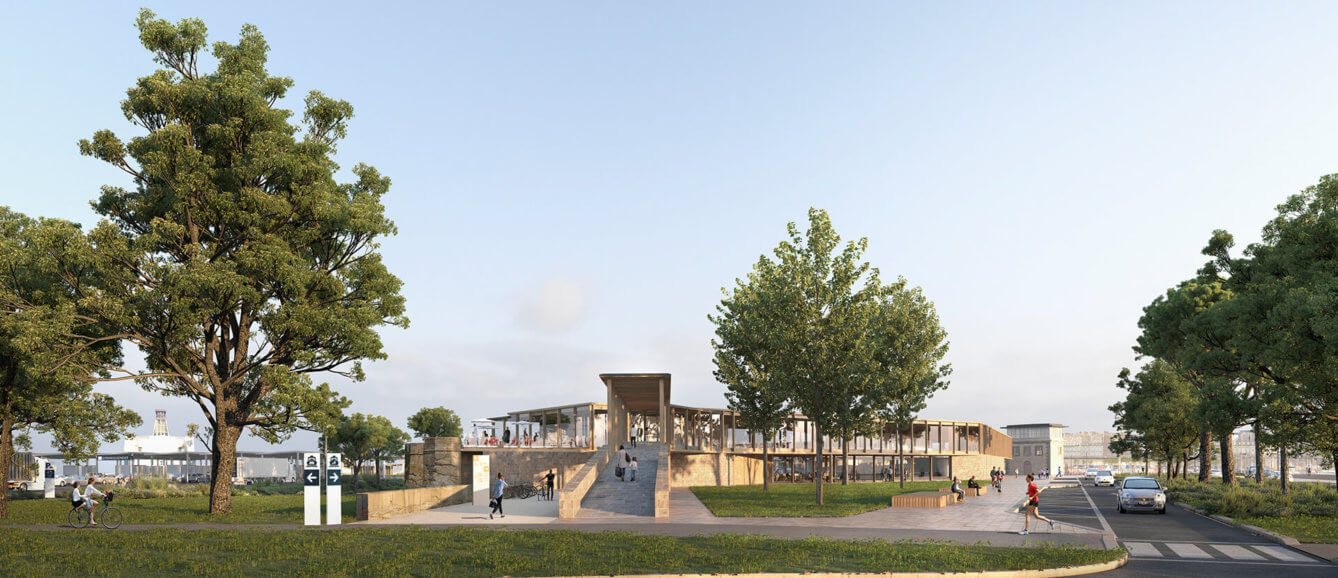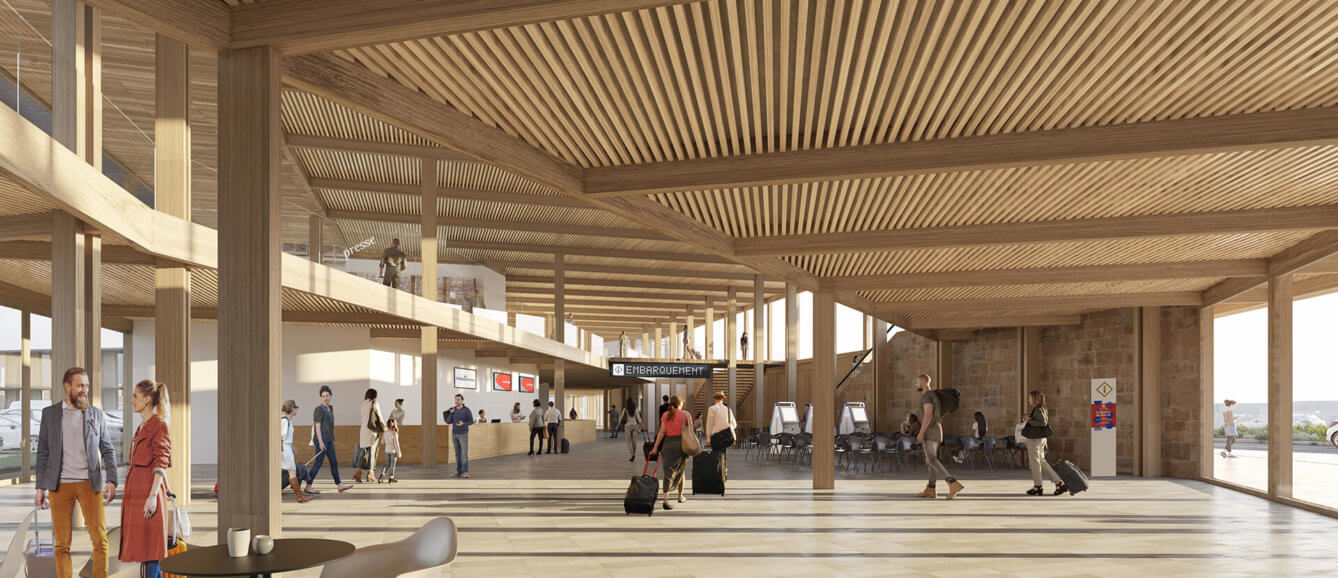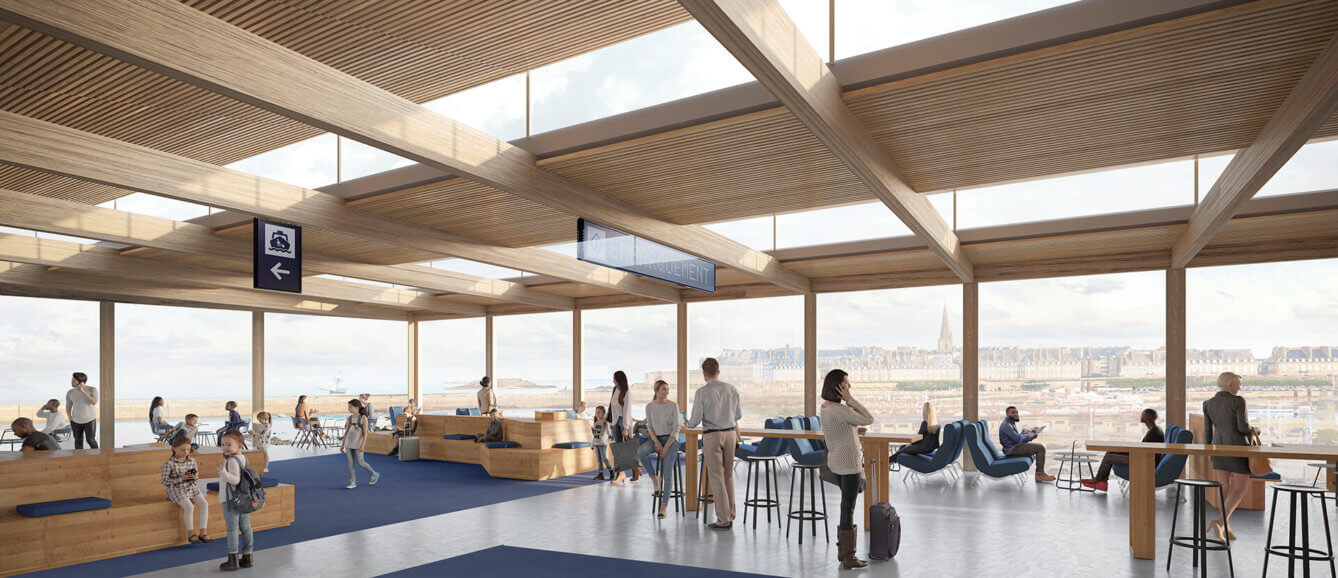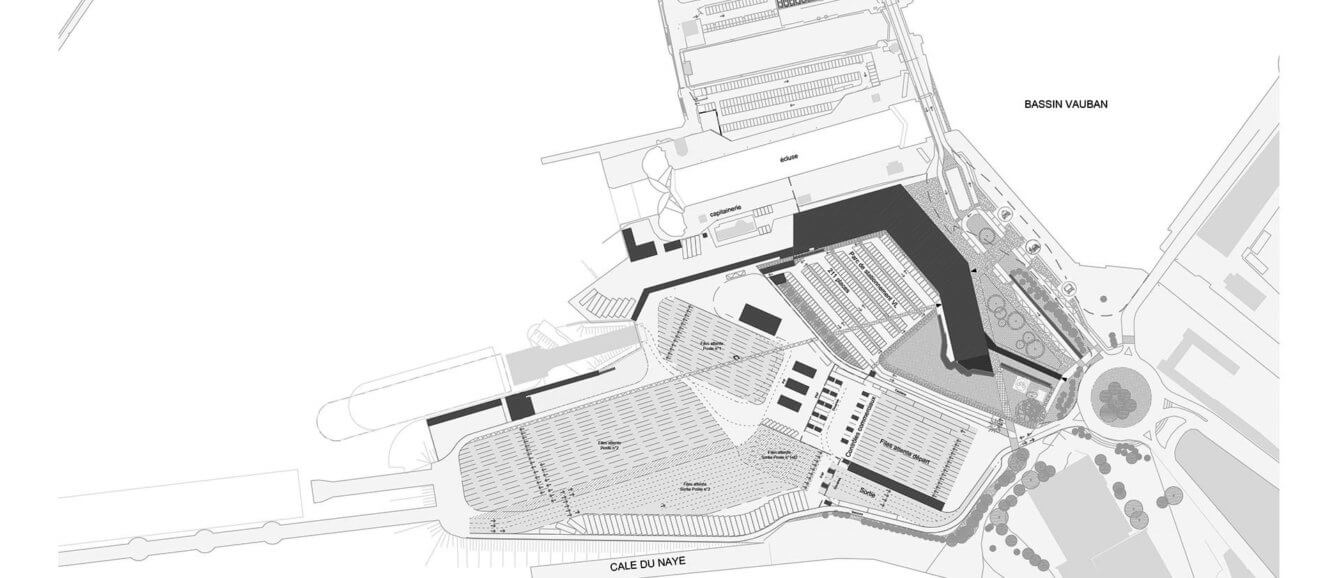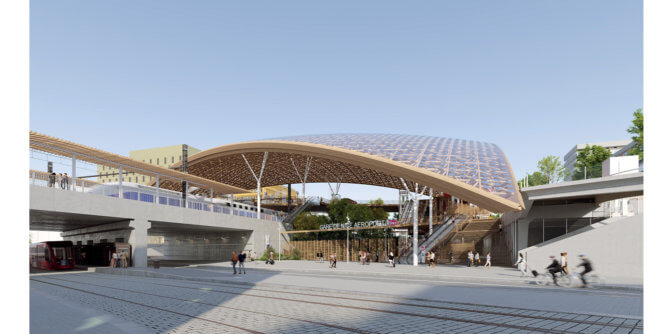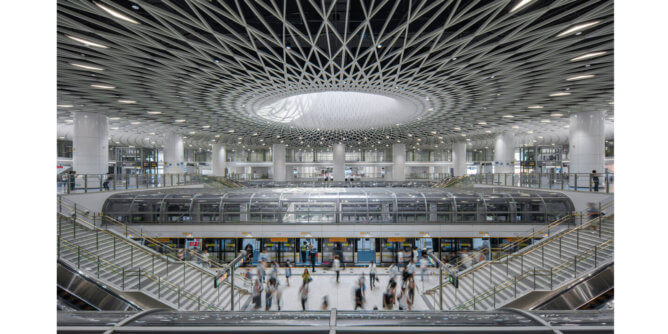Saint-Malo ferry terminal
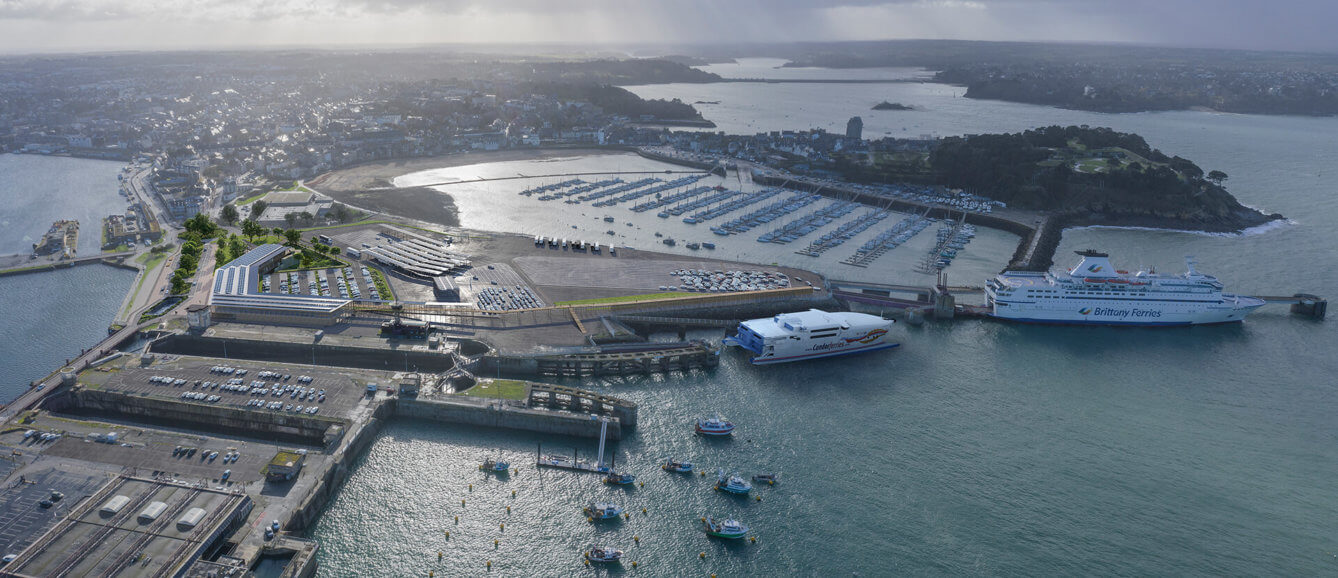
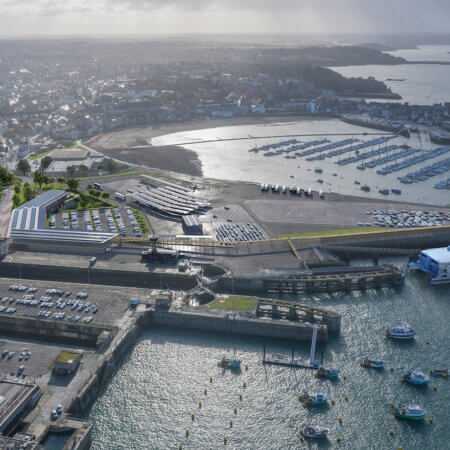
In Saint-Malo, AREP is inventing a new architectural archetype for the ferry terminal of the tomorrow, which embodies the future of post-carbon travel while preserving the natural, built and intangible heritage of the site.
At a time of climate emergency, ferry terminals must change. They are still considered as places associated with fossil fuel combustion and combustion-engine vehicles, whether the latter operate on land or at sea. The new Saint-Malo ferry terminal project has been thought as a low-impact architectural and landscape ensemble that can change over time to adapt to the shifting mobility patterns. Through this project AREP has imagined and designed a new architectural archetype.
The seven-hectare site is open to the elements, the sun, the wind, the rain, and the sea spray. It sits on the edge of the sea and dialogues with the city ramparts. The sun can provide almost twenty times the energy needed, including the energy consumed by ships, buildings, and vehicles, thereby revealing the productive potential of this new archetype: the ferry terminal is a hub of mobility and low-carbon energy. The terminal must adapt to global warming and its spaces have been designed accordingly: albedo and colorimetry of the exposed surfaces, green spaces, and natural ventilation combine to achieve bioclimatic comfort, thermal delight, and lighting.
The Saint-Malo ferry terminal has been designed according to four principles, brought together in an innovative way: enhancement of what is already there and adaptability, soil unsealing and biodiversity, simple and low-impact materials, post-carbon approach and integration into the landscape of renewable energy sources.
Conception : AREP Architectes
